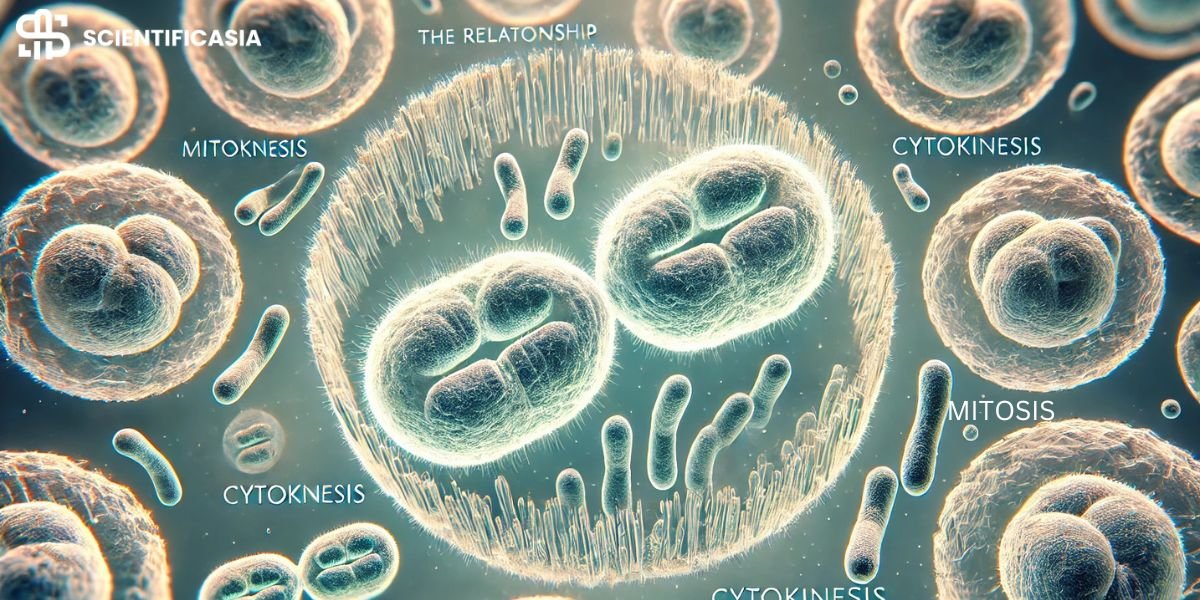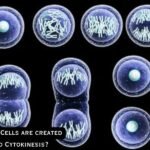Cell division is a fundamental biological process crucial for growth, development, and repair in multicellular organisms. Two key stages of this process are mitosis and cytokinesis. Understanding their relationship is essential for comprehending cellular reproduction and the maintenance of genetic consistency. Cytokinesis, the process following mitosis, divides the cytoplasm, creating two distinct daughter cells, each containing an identical set of chromosomes.
Which Statement Accurately Describes the Relationship Between Cytokinesis and Mitosis?
The most accurate statement is: Cytokinesis follows mitosis, dividing the cytoplasm to form two separate daughter cells, each with an identical set of chromosomes.
Mitosis: The Division of the Nucleus
Mitosis is a type of cell division where a parent cell divides to produce two genetically identical daughter cells. This process ensures that each new cell receives an exact copy of the original cell’s DNA. Mitosis occurs in somatic (body) cells and involves four primary stages:
- Prophase: Chromosomes condense, the nuclear membrane breaks down, and the mitotic spindle forms.
- Metaphase: Chromosomes align at the cell’s equatorial plane.
- Anaphase: Sister chromatids separate and move to opposite cell poles.
- Telophase: Nuclear envelopes reform around the separated chromosomes, preparing for the final division.
Mitosis distributes genetic material evenly but doesn’t physically split the cell. This cytoplasmic division is accomplished by cytokinesis.
Cytokinesis: Dividing the Cytoplasm
Cytokinesis divides the parent cell’s cytoplasm into two daughter cells. Though it typically overlaps with mitosis’s later stages, it’s a distinct process. Cytokinesis in animal and plant cells occurs as given below.
In animal cells, cytokinesis occurs through cleavage furrow formation, where the cell membrane pinches inward, separating the two daughter cells.
In plant cells, cytokinesis involves cell plate formation, which develops into a new cell wall between the daughter cells.
The Relationship Between Cytokinesis and Mitosis
Cytokinesis depends on mitosis but is a separate process. Mitosis ensures correct genetic material distribution, and cytokinesis divides the cytoplasm and organelles to complete cell division.
Without mitosis, cytokinesis wouldn’t produce viable cells due to uneven genetic material distribution. Conversely, if cytokinesis didn’t follow mitosis, a single cell would contain multiple nuclei, leading to abnormal cellular function.
The Significance of Accurate Division
Accurate mitosis and cytokinesis are essential for multicellular organism growth, development, and repair. They also play a role in asexual reproduction in some organisms.
Errors in either process can have significant consequences. For example, chromosome segregation errors during mitosis can cause aneuploidy (abnormal chromosome number), linked to various developmental disorders and diseases, including cancer.
Which Statement Accurately Describes the Relationship?
The most accurate statement is: “Cytokinesis follows mitosis and completes cell division by dividing the cytoplasm and organelles, resulting in two genetically identical daughter cells.” This highlights the sequential nature, complementary roles, and shared goal of proper cell division.
Importance of the Relationship
The relationship is critical for maintaining cellular and genetic stability. Errors can have serious consequences:
- Mitotic Errors: Improper chromosome segregation can result in aneuploidy, associated with diseases like cancer.
- Cytokinetic Errors: If cytokinesis malfunctions, cells can become multinucleated or incompletely divided, disrupting tissue function.
Conclusion: A Symphony of Cellular Events
Mitosis and cytokinesis are distinct yet interconnected processes essential for cell division. Mitosis ensures correct nuclear and genetic material division, and cytokinesis divides the cytoplasm. Their precise coordination is crucial for proper growth, development, and function.
Understanding this intricate relationship is fundamental to comprehending cell division and its significance. These processes are not merely mechanical but a coordinated sequence of events ensuring life’s continuity.
Key Takeaways
- Mitosis divides the nucleus, ensuring each daughter cell receives an identical chromosome set.
- Cytokinesis divides the cytoplasm, physically separating the new cells.
- Both are essential for proper cell division and function in growth, repair, and reproduction.
Haplotype – A Guide to Genetic Code of Inheritance
Pleiotropy – The Impact of Single Gene Variation on Life
DNA as Gene Therapy: The Promising Future of Genetic Medicine
Nucleosome: Key Insight into DNA Packaging and Gene Regulation
















